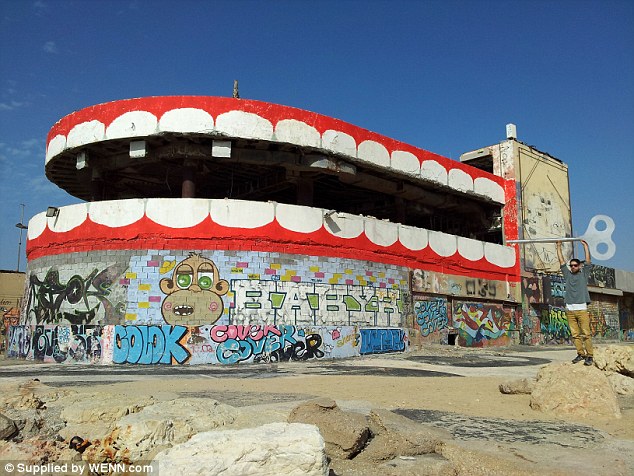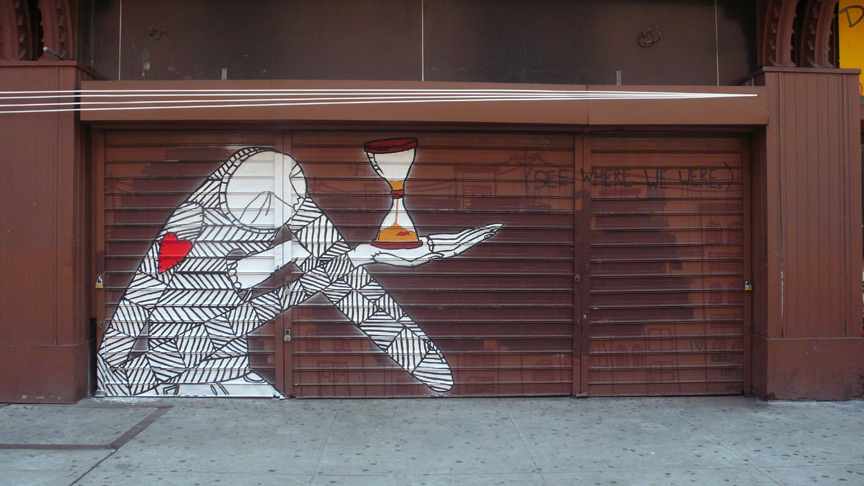Sandy beaches, the extravagant nightlife, and middle-eastern cultural hub are ways to easily describe the Israeli city of Tel-Aviv. Growing over the years from a small town to becoming the country’s second largest city, and global powerhouse in fashion, entertainment, and upscale lifestyle, has been essential in pushing the coastal city into the international spotlight. With a resounding fervor for creativity in setting the trend instead of following the trend, it has become a hotbed for street art and is developing a reputation that is worth a standing ovation.
With social unrest as the general representation of Israel through much of the mainstream media, the countries positive societal offerings may often go overlooked. For example, a variety of commercial and residential buildings across the world have Tel-Aviv’s influence to thank for embracing the Bauhaus architecture (which originated in Germany and Austria), dubbing where a large number of the buildings exist as “The White City.” Though formalized through the lens of architecture, such artistic flexibility helped pave the way for open-mindedness, inspiration, and using what would commonly be viewed as a mere “wall” as a painting canvas. Enter the Street Art form of Graffiti.
Technically, Graffiti is illegal by the letter of the law in Tel-Aviv. On the other hand, the Mediterranean city has stepped away from harshly enforcing the law when it comes to its artistic treasures. More than likely the authorities have adopted the notion that they have more pressing issues than to “uphold the law” by way of cracking down on the petty crime of Graffiti. While turning their cheek to these offenses, the street art scene had the opportunity to flourish and present many talents to the world. Artists such as “Dede,” “Know Hope,” “Wonky Monky,” and “Sened,” along with several others, have grown their name and provided contributions showcasing their unique and rare artistic styles, which are now recognized on an international scale.
In strolling through the bustling streets of HaMehoga, Hanagarim Elifelet, or Allenby, it’s almost certain that any patron will have to perform a double take at the art that delivers some form of social commentary, taboo viewpoints, or simple food for thought that places life in perspective. Either way, the fact that the art doesn’t tap into anyone’s bankroll gives more of a reason to soak in the original and raw messages that are on display. At the same token, a casual walk through the neighborhoods of Florentin, Neve Tzedek, or Jaffa, makes it recognizable that these areas are essential to developing an artistic mega-power by way of the profound and edgy visuals that emerge from the walls. From pieces that are in small crevices all the way to those that cover several stories of the side of an abandoned building, there are gems that shed light on Israeli culture, the state of affairs within the often embattled country, and the mindset of its people.
Although the majority of the Israeli population is Jewish, the city maintains a secular stance, which allows for the cultivation of an environment that embraces commentary and imagery that may cause friction with religious beliefs and ideals. From messages that touch on peace, war, hate, love, lifestyle, politics, and any other topic that will stir up a lengthy conversation, there are truly no bounds for those who turn a dilapidated building into visual spectacle. In one instant, a synagogue could be exited only to see a grandiose mural directly across the street. Queue Dede’s transformation of the Tel-Aviv’s former Dulphinarium, which was the subject of a Hamas suicide bombing in 2001, into a gigantic set of chattery teeth that can be seen from miles away.
Just as quickly as an onlooker can view an enormous serving of eye-candy, Know Hope’s lanky characters can be found to subtly blend in with a business district or residential development which will cause any passerby to aimlessly wander by. But once the consciousness kicks in, those feet will stop moving forward and carefully do a quasi-moonwalk to backtrack the steps to catch a glimpse. With a red heart carefully placed within each work of art, characters will exhibit a graceful flexibility, combined with a somber face that gives rise to a myriad of questions as to the meaning of the piece. While displaying such ranges the character, it is still obvious that a thirst for creativity and the embracing of the imagination is on a grand platform that is served to the general public.
This commingling of street art and traditional city elements speaks volumes to the realization that Tel-Aviv is truly supports the freedom of expression. This allows artists to be uninhibited as they have taken the bull by the horns to communicate through an emphatic, visual, and boisterous means. So if ever in the Middle-East and you happen to visit the small, yet impactful, country of Israel, prepare yourself for life outside of the swanky nightlife and energetic beach scene. The optical treats will likely snatch anyone by the collar and say “HEY, look at this greatness!”
- Follow Clinton Jackson on Twitter @ClintonJEsq


